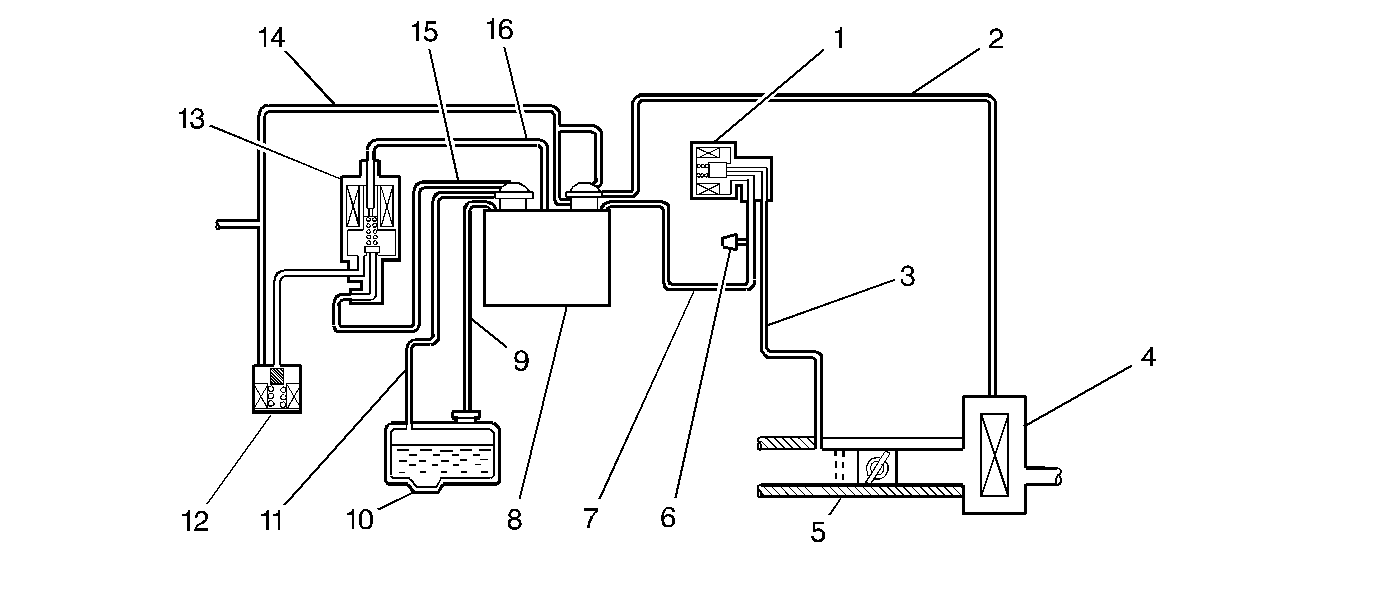The Evaporative Emission (EVAP) control system limits fuel vapor emissions
to the atmosphere. The EVAP system transfers the fuel vapor from a sealed
fuel tank to an activated carbon (charcoal) storage device (EVAP canister).
The EVAP canister stores the fuel vapors until the engine is able to use
them.
The EVAP canister is located at the rear of the vehicle next to the
fuel tank. The EVAP canister is larger than in previous years. The larger
canister and relocation near the fuel tank was necessary for integration
with the vehicle's onboard refueling vapor recovery (ORVR) system.
